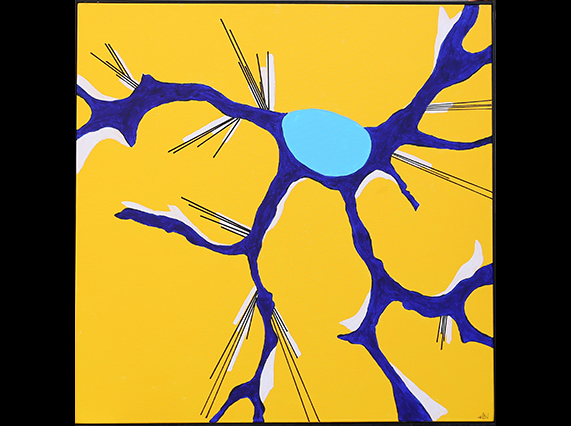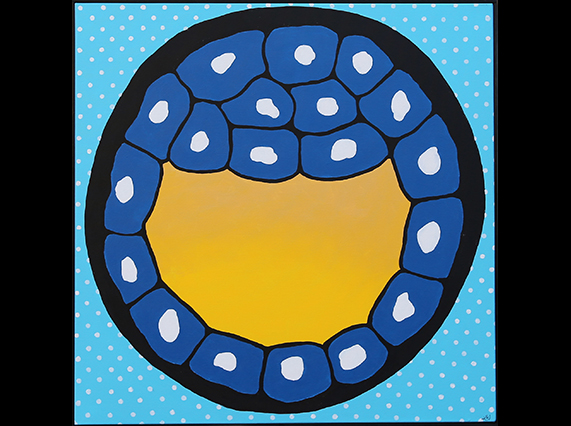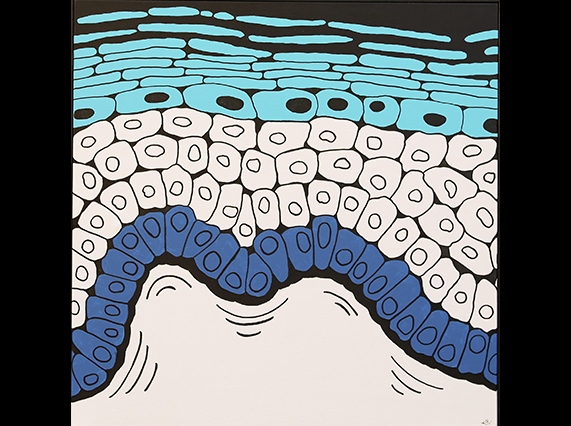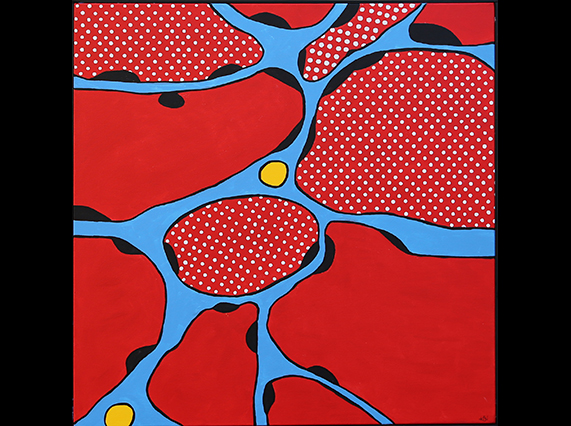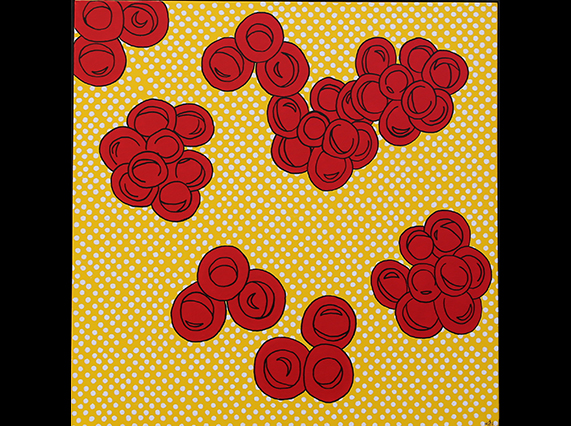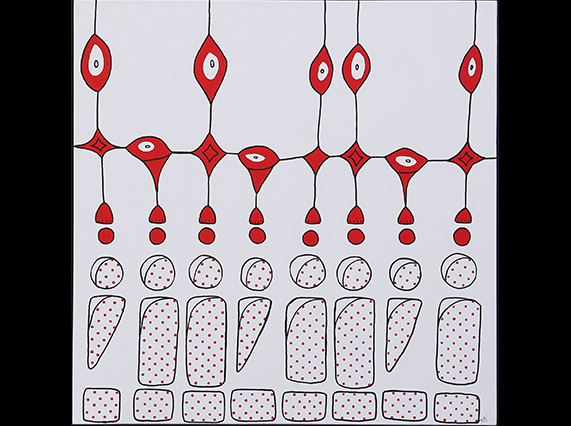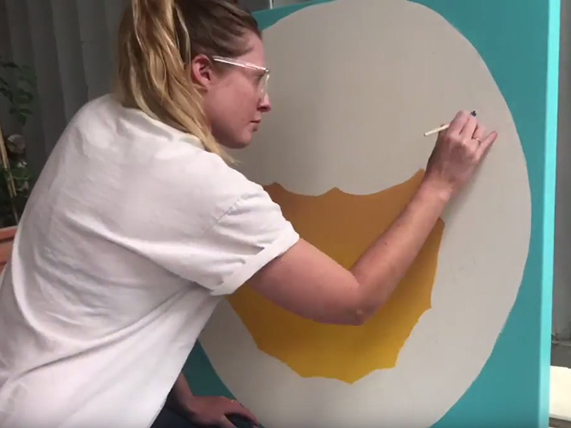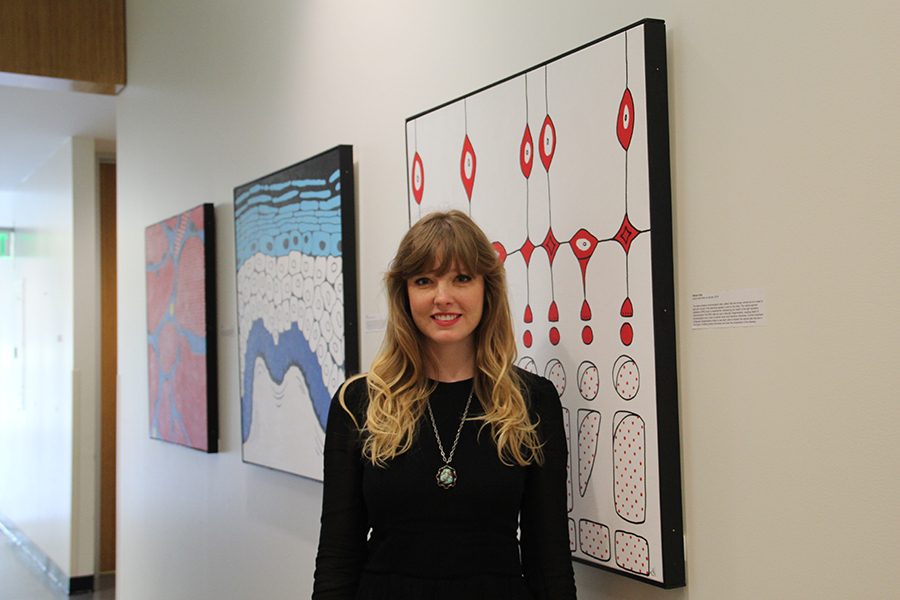
With captions by Kella Vangsness
“As an artist and scientist, I cannot help but imagine stem cells as ‘superheroes’ fighting against ‘villains’ of disease,” said Kella Vangsness, who is graduating from USC with a master’s degree in stem cell biology and regenerative medicine.
Vangsness’ vivid imagination takes form in her series of six paintings titled “Stem Cells: The Heroes of Disease.” Funded by a grant from USC’s Bridge Art and Science Alliance, the large-format paintings, produced with acrylic and a graffiti marker called “krink,” draw inspiration from the original Wonder Woman comics, the pop art of Roy Lichtenstein, and scientific microscopy and textbook illustrations.
Vangsness donated these paintings to the Eli and Edythe Broad CIRM Center for Regenerative Medicine and Stem Cell Research at USC, where they currently adorn the second floor. One of the paintings, “The Astrocyte,” also appeared in a neuroscience-themed art show in the Hoyt Gallery on the USC Health Sciences Campus in Spring 2018, and the full series will go on temporary loan to the new art gallery at the USC Michelson Center for Convergent Bioscience on the USC University Park Campus in Summer 2018.
“Even in the face of challenges,” said Vangsness, “stem cells hold the promise of treating multiple diseases, be it via their regenerative capabilities or with the insight they provide into mechanistic aspects of biological systems and molecular pathways.”

